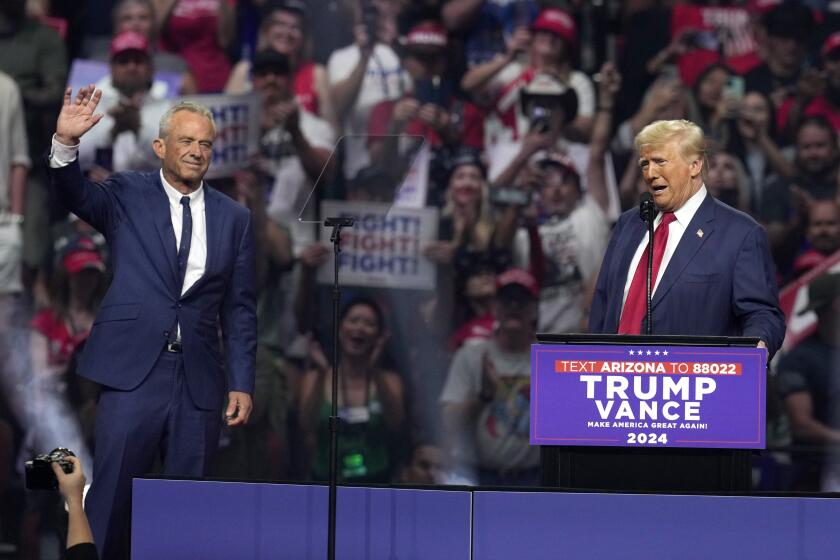Opinion: Could driverless cars and the Hyperloop make L.A.’s multibillion-dollar transportation plan obsolete?
How will people get around Los Angeles in 2066? The Los Angeles County Metropolitan Transportation Authority envisions a future that looks a lot like the present: commuters on light rail lines, subways, buses, freeways and carpool lanes. But what about driverless cars? The Hyperloop? Personal rapid transit (pods)? Self-contained communities where home, work and entertainment are within walking distance? Maybe even flying cars?
Metro’s Board of Directors will vote today on whether to put a permanent 1-cent sales tax increase on the November ballot that would double the size of the region’s mass transit system, as well as improve the highways, add bike lanes and fix potholes.
But one concern is that Metro’s spending plan commits to building specific rail and freeway projects over the next half-century when nobody really knows what L.A. County will need in 50 years, or whether technological advances will make those highways or light rail lines obsolete.
It’s true that most Angelenos get around today in pretty much the same fashion they did in the 1960s. They drive. Or take the bus. Some walk or bike.
Yet, the pace of innovation appears to be quickening. Ride services like Uber and Lyft, casual carpooling, car shares and bike shares are all relatively new developments that give people more mobility choices. Google and automakers expect to mass produce driverless cars within a decade. Autonomous buses and trucks are coming too. Those innovations could dramatically reshape our freeways, development patterns and demand for public transit, for better or worse. (Will the driverless car lead to more sprawl?)
Metro’s spending plan doesn’t anticipate the possibility of dramatic change in a serious way. The agency’s proposal would set aside $20 million over the next two decades for “Visionary Project Seed Funding.” That’s about .01% of the spending plan.
But the amount of “visionary” funding is less important than flexibility. The ballot measure and spending plan give Metro limited ability to shift priorities and projects in response to technological advances, changes in demographics and consumer demands. Metro is supposed to reevaluate the projects and funding priorities every 10 years, and then the Board of Directors can only remove or change a project with a two-thirds vote of the board. This is to alleviate fears from some communities that Metro will do a bait-and-switch on promised projects once the ballot measure is passed. Yet the desire to provide certainty today may make it harder to accommodate changing needs tomorrow.
Of course, it’s not easy to plan for needs that we don’t even know we’ll have. It’s especially hard to think about 50 years from now when Metro’s leadership has very real challenge of convincing present-day voters to hike their sales tax.
For more opinions, follow me @kerrycavan
More to Read
A cure for the common opinion
Get thought-provoking perspectives with our weekly newsletter.
You may occasionally receive promotional content from the Los Angeles Times.











